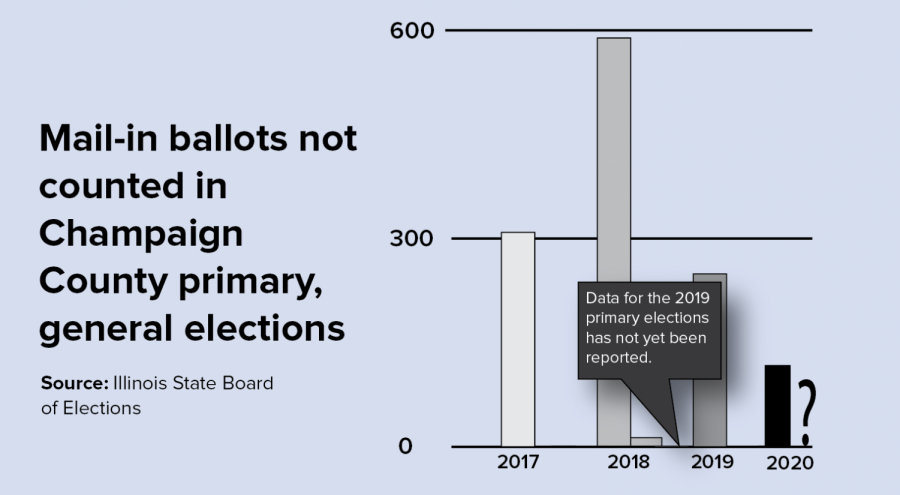Mail-in voting increase chance of ballot rejection
Champaign County residents vote at the Brookens Administrative Center in Urbana, Illinois on Sept. 24. Polling locations nationwide have implemented COVID-19 precautions.
Oct 29, 2020
Many of those who have voted in a general election before may be used to the in-person voting in a booth setting. However, the COVID-19 pandemic has slightly changed the way voting will happen this upcoming election.
With Election Day on Nov. 3, many people will have already sent in their ballots via mail in order to avoid crowds or lines at polling stations. Although polling stations will be open, they most likely will be adhering to social distancing protocols.
Voting by mail may also cause unexpected drawbacks, such as a ballot getting rejected.
During the 2016 election, less than 1% of the mail-in ballots were rejected in Illinois and in 2018, 1.4% of mail-in ballots were rejected, according to ABC 7 Chicago.
According to the Chicago Sun-Times, more than 1.5 million Illinois residents have already cast ballots during the early voting period for the 2020 election. As of Friday, about 1 million people had sent in their mail-in ballot out of the 2.3 million people who requested absentee ballots. In 2016, about 370,000 people voted by mail.
Get The Daily Illini in your inbox!
ABC 7 Chicago reported that the highest number of mail-in ballots requested was during World War II with 116,117 applications.
The Illinois State Board of Elections has been recording mail-in ballots that were mailed in but not counted as well as ballots that were sent but never returned.
In the 2020 primaries, for example, 117 ballots were mailed in from Champaign County but not counted, and 770 ballots were sent out to voters but never returned.

In the 2018 primaries, Champaign County had 13 ballots that were returned but not counted and 471 ballots that were sent but never returned. In the 2018 general election, Champaign County had 589 uncounted mail-in ballots and 1,128 ballots sent but never returned. Data from the 2016 election was not available on the Board’s website.
The Washington Post reported that ballots from younger, minority and first-time voters have more of a chance at being rejected for several reasons. In the 2016 general election, about 1% of the 33.2 million mail-in ballots were rejected with listed reasons as, an unmatched signature on the ballot from state records, no signature on the ballot at all, return envelope problems or a missed deadline.
One of the top reasons for a rejected ballot is a signature that doesn’t match the state’s signature on file. Many states’ envelopes for mail-in ballots require a signature to determine eligibility and identity. Some other states, such as Kentucky or Alabama, require the signature of a witness as well. Illinois, however, only requires the signature of the voter.
Voters are also encouraged to return their ballots as soon as possible. Some states do only accept ballots received on Election Day, while others will count them if they arrive late as long as they are stamped for on or before Election Day, Nov. 3. Illinois will count ballots as late as Nov. 17.
Illinois residents voting by mail should have been registered by Oct. 6, requested their ballot by Oct. 29 and returned their ballots postmarked by Nov. 3 and received no later than Nov. 17. Illinois residents are also able to register and vote on Election Day, in person.
Samantha is a senior in Media.






